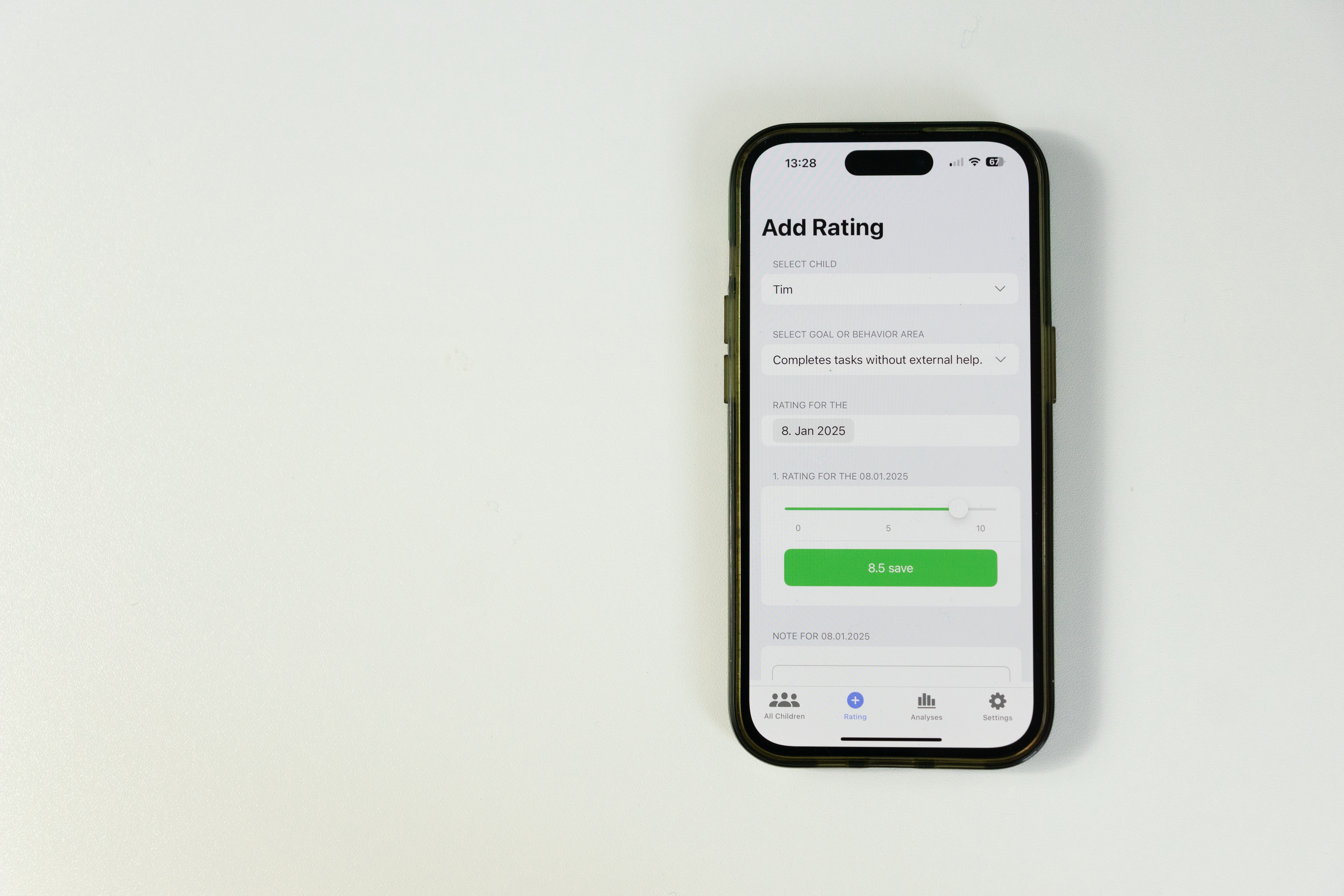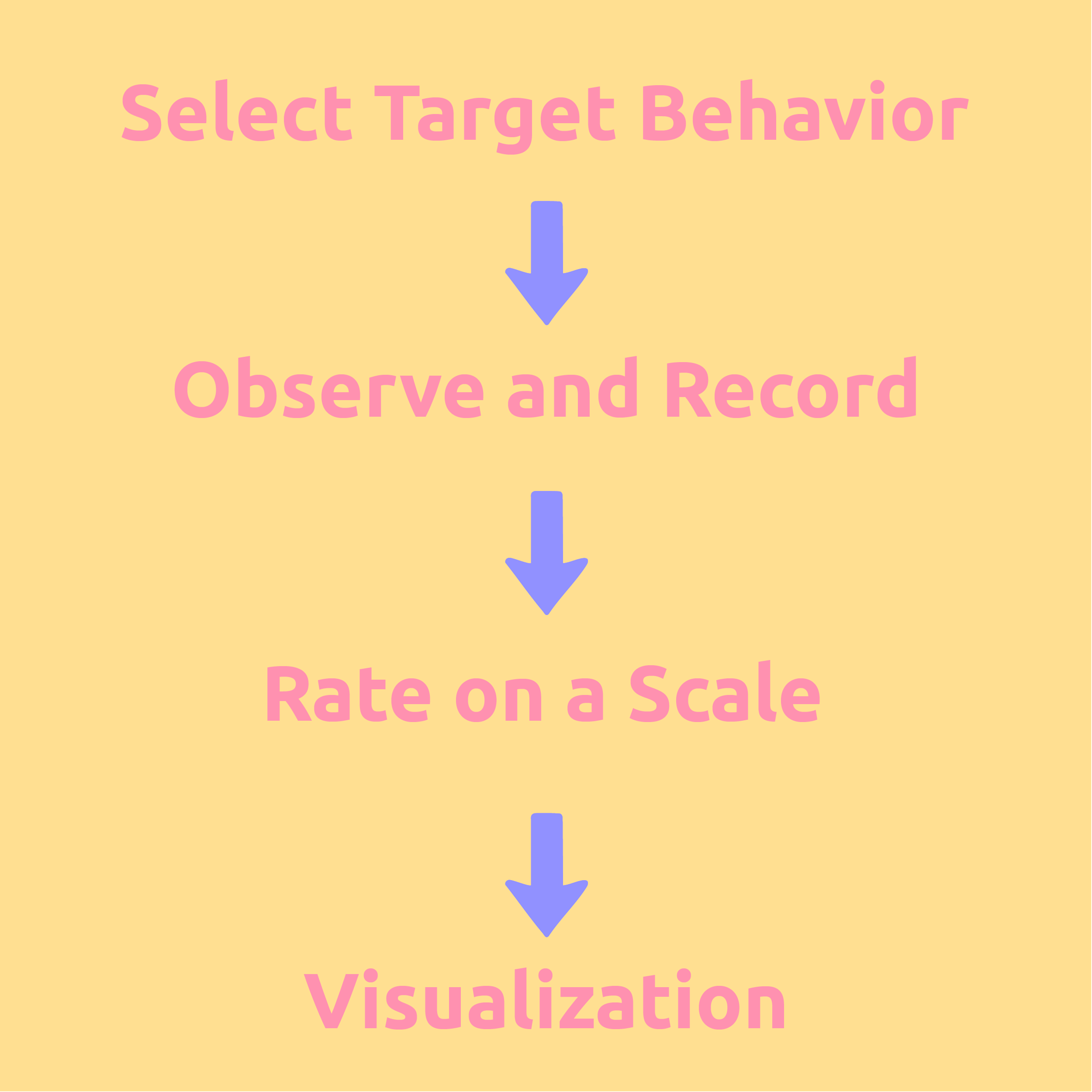
What is Direct Behavior Rating?
Often, it’s unclear when and how behavior changes. A feeling might be accurate, but just as often, it can be misleading. That’s why precise analysis and assessment are crucial to gain an objective picture of behavioral changes. But how does this work, and how can teachers apply it effectively in the classroom?
How does Direct Behavior Rating work?
Direct Behavior Rating is a flexible and efficient assessment method that combines direct observation with behavior rating scales. It is particularly suited for monitoring and evaluating student behaviors in real-time settings, such as classrooms.
Observers typically select a specific behavior to focus on, such as attention, disruptive behavior, or social interactions. They then observe and rate the intensity or frequency of that behavior within a predefined period, using simple and scalable tools like visual analog scales or Likert-type ratings.

The Different Steps of Direct Behavior Rating
The different steps of Direct Behavior Rating provide a structured yet flexible approach to observing and assessing behaviors in real-time settings.
- The process begins with selecting a specific target behavior, such as “on-task behavior” in a classroom. For example, a teacher may choose to monitor how often a student remains focused on their assigned task during independent work time. This step ensures that the observer has a clear focus and measurable criteria during the assessment period.
- Afterwards, the teacher observes the student’s behavior over a predetermined period—15 minutes, for instance. During this time, they may record how consistently the student remains focused on the task and avoids distractions.
- Finally, the teacher evaluates the observed behavior using a predetermined scale—often ranging from 0 to 10—where higher numbers indicate a greater frequency or intensity of the desired behavior. This assessment is carried out immediately after the observation period to ensure accuracy and minimize recall bias.
If this process is repeated over several days or weeks, it generates a substantial chain of data that can be interpreted in terms of behavioral change. There are also helpful evaluation methods that can make trends and developments clearly visible.

Digital Direct Behavior Rating
This process is time-intensive and relies heavily on the diligence and conscientiousness of the observer. To simplify this process, the assessment and evaluation can also be conducted digitally. This is where PlusDaily comes into play.
PlusDaily is a comprehensive app designed to streamline the process of behavior monitoring and assessment. The app allows educators to digitally record observations of student behavior in real-time, eliminating the need for paper-based rating forms. With its intuitive interface, observers can select specific target behaviors, set predefined observation periods, and rate the behavior using built-in scales.
Additionally, PlusDaily offers automated data analysis and visualization, making it easier to identify trends and patterns over time. For example, educators can view average ratings, track changes in behavior, and generate reports with just a few taps. The app also integrates seamlessly with cloud-based platforms like Firebase, ensuring that all data is securely stored and synchronized across devices.
By leveraging technology, PlusDaily not only simplifies the Direct Behavior Rating process but also enhances its accuracy and efficiency, empowering educators to make data-driven decisions to support students’ social-emotional development.